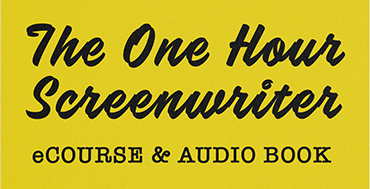This excellent report from a BBC Writer’s Room roadshow in Northern Ireland in January was filed by John Fox for Screenwriter’s Goldmine. It outlines the elements of the acclaimed internet drama, Sofia’s Diary. Here’s what John had to report from the conference:
by John Fox for Screenwriter’s Goldmine. It outlines the elements of the acclaimed internet drama, Sofia’s Diary. Here’s what John had to report from the conference:
Nuno Bernardo, from BeFilms, created the original Sofia’s Diary in Portugal, an online drama with videos, blogs, interactive text messages, message boards and a TV show. It was a huge hit in Portugal and went on to spawn versions around the world, including the UK. Recently, he has created a new show Flatmates. This is for an older audience, but works along the same lines.
Nuno is also working on other drama and non-fiction projects.
If you haven’t seen Sofia’s Diary, here’s (part of) the UK version:
http://www.bebo.com/sofiasdiary
Nuno comes from a marketing background and this was his starting point for Sofia’s Diary.
He realized the teenage audience was becoming increasingly difficult to reach, especially through TV. Teenagers are increasingly more interested in the internet – as both a channel of entertainment and information (music, gossip sites, blogs, etc) as well as a way of communicating, through messenger services such as msn.
What sets internet use apart from TV is the interactivity between users. This is also borne out by the fact that teenagers are the heaviest users of text messaging. (Nuno quoted a figure of 200 texts a day for some teenage groups.)
From this, the idea for Sofia’s Diary was born.
The interesting thing from a writing/storytelling point of view is that it was is about creating a whole virtual world for the character and audience, and making a lot of this real time.
This included –
- Phone texts, sent directly to subscribed users, telling them about something that had just happened (and sometimes asking for advice).
- Internet diary blogs, updated every day at 8:30pm. These constituted -a daily experience- for the character, and always left a problem for the next day while asking advice – for example: I’ve just found out that my boyfriend kissed my rival. Should I forgive him? Users were then invited to leave responses on message boards. This created debate amongst users, with the characters also joining in at times.
- Sofia had her own blog, as did many of her friends, all giving different points of view of central events.
- Weekly/monthly magazine diaries, published in teen mags.
- A radio soap, available for download – again -a daily experience-.
- A mobile phone alert service.
The idea for all of this was to connect with the teen audience by creating the world of Sofia in terms/medium that they themselves use – basically, communicating with them how they communicate with each other.
And all of this through a story which reflected/mirrored their lives/concerns.
Sofia’s Diary was launched in Portugal and was an instant success.
In 2003 it was extended to a television show on the Portugese PBS.
5 minute episodes were produced each day, with a 30 minute episode at weekends. This debuted to some of the best audiences on Portugese TV.
Unlike the other aspects of the Sofia’s Diary, the TV show was not a year-round experience, but ran for 26 weeks a year.
The brand also moved into books, DVDs, a Sofia’s Diary magazine, sponsorship and product placement deals, and product licensing.
Sofia’s Diary then went international, adapting to the local audience and culture. For instance, the South American version had a more sexually active teenager than the one in Portugal. (In the UK, instead of Sofia’s family consisting of mum, dad and brothers/sisters all living together, we had a more dysfunctional UK family. Go figure…)
The show launched in the UK with 5 million hits in its first week. After 6 months that was up to 30 million hits a week… The show then began running on Channel 5.
Nuno explained how it all worked in more detail.
First of all, it’s important to realize this was an ongoing, live experience – 7 days a week, featuring radio, blogs, live texts, magazine articles, comment boards.
It was all a constantly on-going story, so there was a strong sensation of living the story, like a great big multi-platform soap.
Elements were created to interact with each other – for example, the radio show fitted in with the blog, which fitted in with the text messages – but each element could also be viewed/experienced alone.
In other words, most of the audience would listen to the radio show one day, receive texts another day, read the blogs for a couple of days, maybe spend an hour on the message boards at the weekend exchanging views and advice. It wasn’t necessary to view everything to understand the story.
However, all the different platforms were supporting and cross-promoting each other – which is a really interesting concept for writers to think about. Many people are very wary of the whole idea of writing for online drama, or are simply not that interested (“it isn’t real writing”), but viewed in the above terms, it suddenly seems like being given a big box of tricks, in every medium and platform possible, to tell your story.
The other important aspect was the extent to which the whole thing was hugely interactive.
The audience’s view and opinion on what was happening to Sofia (and her friends) was actively sought. And as that opinion came in, it could affect the story.
It’s a fine line, but as Nuno explained, the audience felt ownership of the show, but they weren’t writing it or dictating where it went.
This was especially true when it came to adding the TV show element, which was filmed way in advance so could never have reacted to the views of the audience anyway.
Nuno also gave another interesting reason for NOT giving the audience power over the direction of the storyline. The audience will always protect the protagonist (if you are telling your story correctly!) and punish the antagonist, which would ultimately lead to very boring stories, with little conflict or drama.
However, the feedback from the audience could also act as real time criticism of the story. For example, on several occasions it became clear through the online discussion boards that the audience hadn’t understood very clearly why a character had behaved in a particular way, or had misconstrued their motives because the story, in that instance, had just been told too fast.
The writers were able to read this and go into the blogs or send out texts the next day and clear those kind of issues up (in character of course), reassuring the audience.
Therefore this rolling multi-platform story was starting to interact heavily with the audience, -interrupting- their lives with unexpected and unplanned text messages from the characters, (“Oh my god, I’ve just found out Dave kissed Francesca…!”)
This is storytelling which apes life-like experiences, blurring the story/reality lines. (Not that I believe that the audience isn’t capable of distinguishing the two. Of course they are. But it questions HOW we tell stories.)
And then Nuno’s next project took that even further.
For Flatmates, again created originally for Portugal, Nuno took a group of 3 flatmates and an older age group. From a storytelling point of view, this complicated (in a good way) the relationship between the audience and the characters. The audience have favourites, and the three flatmates can fight it out online with their blogs, the users then fighting on the message boards.
This led to a different, and potentially more interesting, dynamic between audience and characters.
Another thing they found was that teenagers didn’t like the websites for TV shows. They seemed tacked on, with no interactivity, and histories and blogs which started the day before the show’s debut. Therefore, when creating the blogs, they created a past for the characters, even using the actors family photos, etc to fill that past out.
The audience chose the actors through online auditions which the audience voted for. This had also happened with Sofia’s Diary.
The community/fans were invited to come along to the bar featured in the show, to mill around as extras, but also to interact with the actors, who stayed in character the whole time.
The actors appeared on a daytime talk show as their characters, and the show introduced them as such, blurring the lines between reality and fiction, or at least playing with them.



No comment yet, add your voice below!